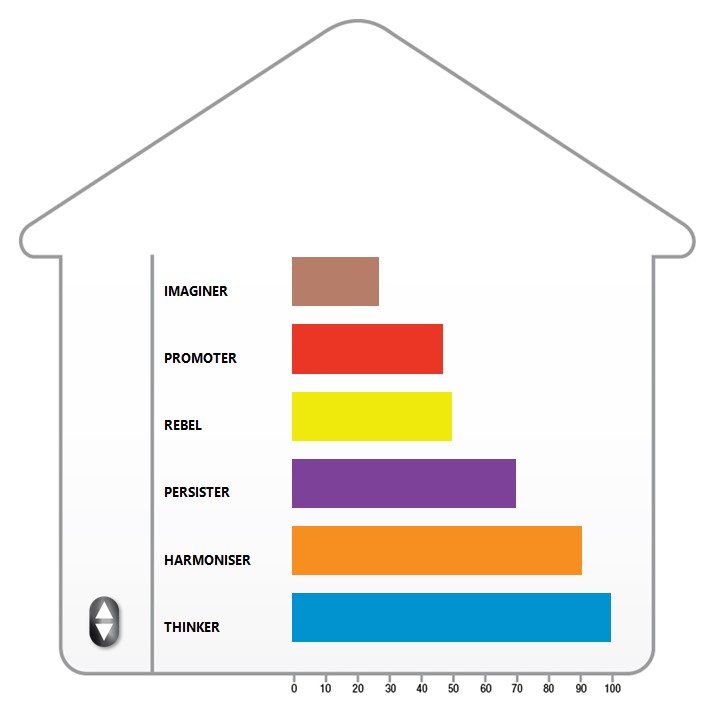An interesting psychological/personality model that Becky is looking into is PCM, Process Communicaiton Model. Invented in the 1970's by a guy named Talib Kahler, and marketed heavily to businesses, it categorizes people by what general schema they use to interpret the world around them.
UNDERSTANDING YOUR STRUCTURE THE TYPES First, note that you are not one of these types instead, you have all six types within you with some being more pronounced. Below are the six types with a brief explanation. More detailed descriptions of each are available in the reference material at the back of this profile.
Harmonizers are warm, compassionate, and sensitive people who see the world through a filter of emotions or feelings. They prize relationships with family and friends. They are motivated by unconditional love, emotional safety, and environments that please the senses.
Thinkers are logical, responsible, and organized people who see the world through a filter of their thoughts. They prize data and information. They are motivated by recognizing work done efficiently and time that is structured appropriately.
Persisters are dedicated, observant, and conscientious people who see the world through a filter of their values. They prize loyalty and commitment. They are motivated by recognizing work that furthers their values and by sharing their conviction.
Imaginers are calm, reflective, and imaginative people who see the world through a filter of their imagination. They prize space and privacy. They are motivated by having solitude.
Promoters are adaptable, persuasive, and charming people who see the world through a filter of action. They prize resourcefulness and self-sufficiency. They are motivated by incidence, defined as lots of action in a short period of time.
Rebels are spontaneous, creative, and playful people who see the world through a filter of reaction or likes and dislikes. They prize originality and authenticity. They are motivated by playful contact.
Nobody is just one, but there is at least one which was the basis of most of your interactions as a kid. And there is one you are using now. Managers and friends can do well by understanding which is being used now and what the fallback is. The fallback is where we go when under stress. It's been difficult for me to understand all the permutations because they don't seem to be presented well anywhere.
I'm a bit unusual because I have three bases, which means I changed the way I dealt with the world twice. I probably started as an Imaginer, became a Thinker in Junior High or High School, and became a Persister in Graduate School. I think I changed to feel loved and have a place, but it doesn't work that way. My current working set is Harmonizer.
I took a test (had to pay for it) and here are my results:
14844+Bruce+Wilson+(ENSBDIP).PDF (2.09 mb)
As I say, it's an interesting way to look at people and interact with them better.
